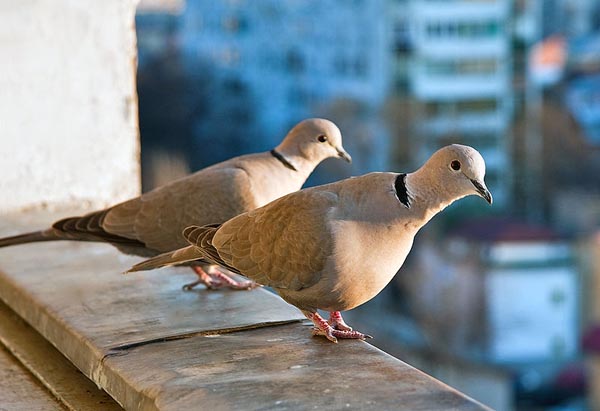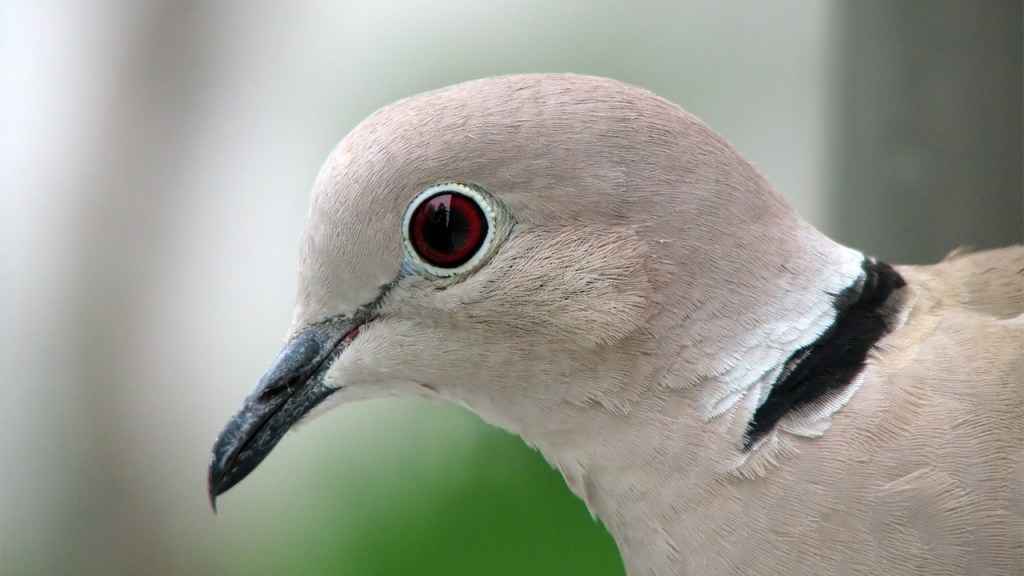The Great Backyard Bird Count (GBBC) — one of the largest citizen science initiatives in the world – annually documents a wide variety of bird population trends.
To my mind, one of the most interesting has been the dramatic spread of the non-native Eurasian collared dove across North America.
The GBBC asks citizen birders to watch an area for at least twenty minutes sometime during a four-day period in mid-February (this year’s count concluded yesterday), and record the birds they see.
Just ten years ago, seeing a Eurasian collared dove would have been a novelty. No more: the doves are now commonly reported by birders in most of the United States.
GBBC data tell the story of this rapid spread.
In the 1970s, the Eurasian collared dove was introduced to the Bahamas. By the early 1980s, the non-native birds made their way to South Florida, where they established populations. Then they began spreading north and west.
Their range appears to have expanded slowly at first. A look at GBBC reports from 1998 show a lot of sightings in Florida, with some birds reported in Texas, Alabama and Arkansas.
By 2001, the doves reached California.
Last year’s bird count results showed the Eurasian collared dove had colonized much of the country. It has not (yet) been reported in New England, but it has reached as far north as Alaska.
The GBBC’s video map dramatically illustrates this expansion.
In my state of Idaho, the doves were first recorded in 2005 by two backyard birders. In subsequent years, the bird was commonly reported in Idaho’s eastern corners. Last year, 132 GBBC participants reported 719 doves throughout the state.
I saw my first Eurasian collared dove in our backyard in 2008 – a banded bird that may have been an escaped pet. Last year, I began seeing the doves hanging around our neighborhood. This year was the first that I noted the species during my own participation in the Great Backyard Bird Count.
What’s going on here? Should conservationists be concerned about this spread?
Unlike some dove species, Eurasian collared doves aren’t migratory. However, they do readily expand into new suitable habitat. In fact, in their native Asia, Eurasian collared doves have been rapidly expanding their range as well – colonizing new countries every year.
The dove is one of those species that adapts well to humanity. The trees, power lines and bird feeders of suburbia provide perfect habitat. The Eurasian collared dove is almost always seen near homes and farms, not unbroken forest or prairie.
Research indicates it is not adversely affecting native mourning doves or other birds. It may simply be filling a new habitat niche created by suburban habitat. But it is still early in the spread.
Could Eurasian collared doves become an invasive threat? That remains to be seen.
Citizen science projects like the GBBC and another citizen initiative, Project FeederWatch, will help scientists continue to track the spread and impacts of the species. It will be interesting to learn what this year’s count found about Eurasian collared doves. If past years are any indication, their populations will likely have grown and spread into new areas of the country.
Have you seen Eurasian collared doves in your area? Have you noted other trends during your backyard bird counts? Let us know what you’re seeing!





just saw two in a tree at winchester commons in goleta, ca
Two Eurasian Collard doves visited my backyard in Fort Collins most of the winter 2021.
Now only one visits. He seems very comfortable with the other birds and sits on a garden box edge for a long time looking at me. He arrives at different times throughout the day starting at 9:30 am.
Wonder what happened to his buddy.
I live in Southern Oregon and have never seen one of these birds yet. I have seen many mourning doves and pigeons but not a single Banded Euro dove in our area East of the Cascades. There may be some down I-5 and I’ve read many of the comments about the ones along the coast and up north or down south, but not here.
I wonder if our high desert area has something to do with it. We do have quite a few Bald Eagles and Hawks that may keep them away. Any ideas?
I live on the central coast of Oregon in Toledo, just outside of Newport. I have observed these Eurasian collared doves for several years now. I don’t hear them calling in the winter, but just heard the first cooing
today, Feb. 18, 2021. I was wondering if maybe they migrated further south during the winter but your article mentions they don’t migrate. Perhaps I just didn’t see or hear them during the colder months.
1/31/21 – Carlsbad, CA
I feed the mourning doves daily. They gather on my neighbor ‘s carport daily to wait. Today I saw two Eurasian collared doves along with them. There may have been more, but they were skittish and flew away when I came to the door. Beautiful! Hope to see them again.
I’ve seen dove occasionally in my backyard in Denver for a year. Today (during a light snow) is the first time I have identified the pair of dove. They are the Eurasian collared dove. Very peaceful and beautiful!
Six years ago (on a snowy Christmas morning) there were some dove at my house in the Denver foothills (Golden CO). That same year my mother in Centennial CO had two pair of dove that would sleep at night huddled together in a corner of her covered patio. We put soft bedding down for them so they wouldn’t have to sleep on a cold cement floor. We were all very surprised to see dove in the winter in Colorado, and had assumed they had gotten lost. These dove could very well have been the Eurasian collared dove but we never actually researched it.
Question: I have bird seed out for my huge variety of birds all year. Is there anything else I can or should do to help the birds in Winter?
There are many birdhouses and bird baths out during Spring through Fall. However I continue to put water (as well as seed) out for the birds in Winter. Of course the water will freeze periodically, but Denver can be dry year round so I do what I can to assist the birds.
Thank you,
Stephanie Doss
On May 2/20, June 3/20 & June 14/20 I noticed and took pictures of an Eurasian Collared Dove in South Eastern British Columbia near Trail on Highway 22a heading to the Waneta border crossing into Washington. I am not sure if it was the same bird each time. I will be watching again this year.
I have seen three Eurasian collared doves this week in my yard in a mixed use area just south of downtown Oakland, CA.
I live in Oceanside California. I have seen a pair of the Eurasian collared doves in my yard for several days in November.
The regular doves seem to chase them away.
Hope that helps you out in your count.
They are beautiful birds.
Beautiful birds! I have had Eurasian doves since 2004 at my home in lake Shastina Ca.
We’ve been seeing increased incidents of ring-necked doves visiting our bird bath and feeder in recent months. Still nowhere near as common as our smaller, native doves.
Arcadia, CA 91006, near the foothills of the San Gabriel mountains north of Los Angeles
Dear Mr. Miller,
I realize that your article was written in 2014 and it is now 2020, but hoped this would still be useful at this time. I live in Santa Barbara, CA 93105 and these doves are everywhere! I am watching two of them at the moment that are building a nest in an oak tree in the back yard. There were also a couple of them at our children’s home last evening that seemed to be doing the same thing. It also must be suddenly their season, as they seems to have arrived just recently.
Hope this is helpful in your research.
Terry Hankenson
Interesting
We have several That are in pairs that hang around our home in North Baja, Sea of Cortez, Mexico. They have no fear! They sing “Whoo Hooo”. They like our dog kibble. They tease our Westies. They have distinctive black 3/4 collar around neck that is on back and sides but not in front. They are friendly with small Wrens. I would like to know more about them. Good resource?
We seem to have a pair of Eurasian Collared Doves, Matthew. They are a somewhat timid pair, although they hang around in the area for very long times. I manage to imitate some of their calls (through my thumbs with hands clasped) if I hear them, especially early in the morning. Often enough, one of them shows up and I get to show them to guests. I have a particularly fine picture of one that did just that yesterday evening in a troubled sky that let just enough light in for me to snap a photo. I’m happy to share it with you if you would like to see it.
I live in Blind Bay, British Columbia.
I just saw one here in Phoenix.